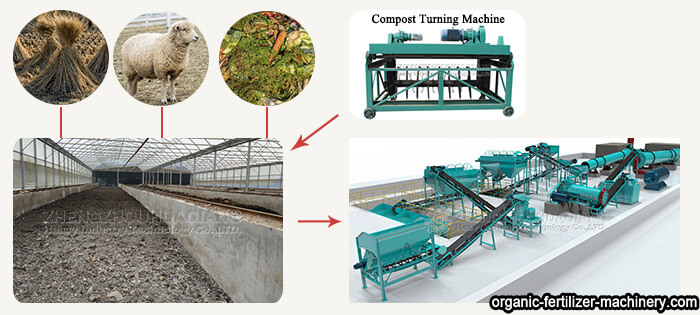In organic fertilizer production lines, equipment is central to ensuring product quality. The differences between bio-organic fertilizer and organic fertilizer production are directly reflected in their configuration and functionality. While both focus on organic matter processing, their core objectives, process steps, and technical requirements differ significantly.

From a core functional perspective, organic fertilizer equipment prioritizes achieving optimal composting. Its core equipment, including compost turners, crushers, and granulators, focuses on rapid composting, impurity removal, and shaping of organic matter, without regard for microbial survival and activity. For example, high temperatures (60-70°C) can be used to kill pathogens during fermentation, eliminating the need for strict temperature control; sufficient decomposition of the organic matter is sufficient.
Bio-organic fertilizer equipment, on the other hand, must achieve the dual goals of achieving optimal composting and preserving viable bacteria. Building on the foundation of organic fertilizer equipment, it incorporates key functional bacteria inoculation and low-temperature treatment equipment. For example, a dedicated inoculant mixer is required to ensure uniform mixing of functional bacteria with mature materials. The drying process requires a low-temperature dryer (typically controlled at 40-50°C) to prevent high temperatures from killing the functional bacteria. Furthermore, live bacteria detection equipment is required to monitor the effective live bacteria count in the finished product (≥200 million cells/gram) in real time—a feature not required by organic fertilizer equipment.
Process control precision also varies significantly. Organic fertilizer equipment has relatively loose control over environmental parameters. For example, fermentation time can be flexibly adjusted based on the maturity of the material, and wide fluctuations in humidity and temperature do not affect the quality of the final product. However, biological organic fertilizer equipment requires precise control of parameters at every stage. When inoculating functional bacteria, the material moisture content (30%-40%) and pH (6.5-7.5) must be strictly controlled, otherwise the bacterial activity will be affected. For packaging, a more airtight packaging machine is required to prevent contamination from external bacteria and ensure that the live bacteria remain within the shelf life.
Furthermore, the material requirements for the equipment vary. Components of bio-organic fertilizer equipment that come into contact with materials must be made of corrosion-resistant, heavy metal-free stainless steel to avoid affecting microbial activity. Some components of organic fertilizer equipment can be made of ordinary carbon steel to reduce costs.
In summary, when selecting equipment, it's important to clearly define your production goals. If you're producing standard organic fertilizer, basic organic fertilizer equipment will suffice. If you're producing bio-organic fertilizer, you'll need to upgrade the basic equipment with functional bacteria processing and low-temperature control modules to ensure the finished product has both organic quality and viable bacteria, avoiding substandard products due to inappropriate equipment selection.